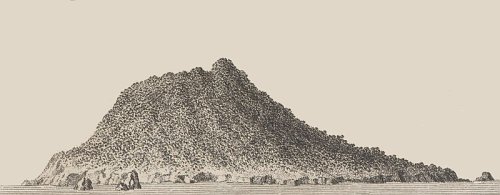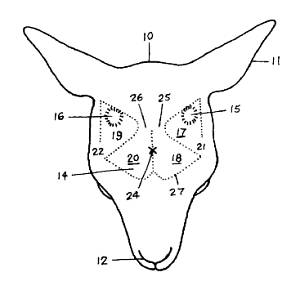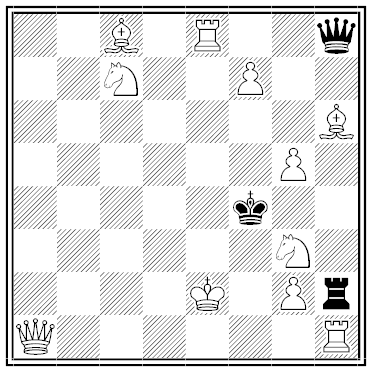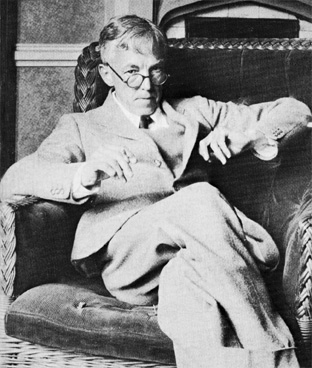
If three hula hoops cover a common point, then a fourth hoop of the same size will cover their remaining intersections.

If three hula hoops cover a common point, then a fourth hoop of the same size will cover their remaining intersections.
WESTPHALIA.–If the east has its Fata Morgana, we, in Westphalia, have also quite peculiar natural phenomena, which, hitherto, it has been as impossible to explain satisfactorily, as to deny. A rare and striking appearance of this description forms now the subject of universal talk and comment in our province. On the 22nd of last month a surprising prodigy of nature was seen by many persons at Büderich, a village between Unna and Werl. Shortly before sunset, an army, of boundless extent, and consisting of infantry, cavalry, and an enormous number of waggons, was observed to proceed across the country in marching order. So distinctly seen were all these appearances, that even the flashing of the firelocks, and the colour of the cavalry uniform, which was white, could be distinguished. This whole array advanced in the direction of the wood of Schafhauser, and as the infantry entered the thicket, and the cavalry drew near, they were hid all at once, with the trees, in a thick smoke. Two houses, also, in flames, were seen with the same distinctness. At sunset the whole phenomenon vanished. As respects the fact, government has taken the evidence of fifty eye-witnesses, who have deposed to a universal agreement respecting this most remarkable appearance. Individuals are not wanting who affirm that similar phenomena were observed in former times in this region. As the fact is so well attested as to place the phenomenon beyond the possibility of successful disproof, people have not been slow in giving a meaning to it, and in referring it to the great battle of the nations at Birkenbaum, to which the old legend, particularly since 1848, again points.
— J. Macray, in Notes and Queries, March 25, 1854

The island of Frobnitz is trying to decide whether to legalize left-handed quonkbats. Three million voters are represented by 200 members of parliament. In a referendum, a majority voice support for the measure, so it goes before parliament … which rejects it.
Why? Because most of the MPs’ constituencies oppose it:

With this distribution, more than 55 percent (1,664,000/3,000,000) of the referendum votes are positive, but still more than 5/6 (167/200) of the MPs must vote no if they are to honor the preferences of their supporters.
In Voting Paradoxes and How to Deal With Them (1999), Hannu Nurmi writes, “The practical significance of the referendum paradox is in the shadow it casts on the institution of consultative referendum. Which should be decisive: the majority of the votes cast in a referendum or the majority of the votes of representatives who believe to represent the views of the majority of their supporters? If the former is considered more decisive, why then resort to the latter at all? If the latter is regarded as more important, then why bother with the former at all?”

In 1984, Timothy Zell patented a surgical procedure to make a unicorn of a cow, antelope, sheep, or goat, essentially by transplanting the horn buds.
In the patent abstract Zell notes that he’s following on the work of University of Maine biologist W. Franklin Dove, who apparently spent several years in the 1930s pursuing the same endeavor; in May 1936 Dove published an article the Scientific Monthly with the notable title “Artificial Production of the Fabulous Unicorn.”
Zell’s improvement consists in transplanting the buds early, before they have become attached to the skull. But he notes also that he wants to create a unicorn with “a higher mental capacity and greater physical capabilities” by positioning the horn over the pineal gland. “Tests have indicated that transposition of the horns of the animal to form a unicorn with the single horn being positioned over the pineal gland has rendered a more intelligent and controllable animal.” Sounds like he was planning something specific.
An Irishman was crouching on the border of a copse with an old, rusty, broken fire-lock in his hands, and his eyes intently and slyly fixed on a particular spot. A neighbor, happening to pass there, asked him what he was about.
‘Hush!’ said Pat, ‘a rabbit is coming out there presently, and I’ll pepper it, I tell you.’
‘What! pepper it with that thing! Why, you fool, your old gun hasn’t even got a cock.’
‘Hist, darling! the rabbit don’t know that.’
— Charles Carroll Bombaugh, The Book of Blunders, 1871

“Paul Morphy IV” submitted this puzzle to the Journal of Recreational Mathematics in 1974. White might capture Black’s queen at this point, but instead can choose to mate on the move. How?

Mathematician G.H. Hardy had an ongoing feud with God. Once, after spending a summer vacation in Denmark with Harald Bohr, he found he’d have to take a small boat across the tempestuous North Sea to return to England. Before boarding, he sent Bohr a postcard that said “I have proved the Riemann hypothesis. — G.H. Hardy.”
When Bohr excitedly asked about this later, “Oh, that!” Hardy said. “That was just insurance. God would never let me drown if it meant I’d get undue credit.”
A puzzle from Henry Dudeney:
Her eyes were filled with tears, her face was flushed with anger, and her expression was one of indignation at the brutal injury to which she had been subjected.
“You monster of cruelty!” she cried, “I have borne with you too long! The very foundations of my being you have injured. Day by day I have endured your tortures. When first we met your ease and polish attracted me, and when you became my own my friends envied me. Yet see what I have suffered for your sake! You offer every opposition to my advancing myself. Your understanding is far too small for a large soul like mine. My standing in society you have entirely ruined. Had we never met I might have walked in peace. Begone! We part for ever.”
There was a moment’s convulsive breathing, a grinding of teeth, and a quick sigh. It was all over between them. One supreme effort, and she cast it from her —
“‘Whom?’ perhaps the reader will ask. That is the question. I leave you to fill in the blank.”

When developers planned a shopping mall in the southwestern Chinese municipality of Chongqing in 2004, they quickly bought out 280 local homeowners in order to clear the necessary land. They didn’t count on 49-year-old Wu Ping and her husband, Yang Wu, who declined to leave and clung to their two-story brick house even as the developers excavated the land around it and allegedly sent thugs to intimidate them.
The case became a symbol of the struggle between homeowners and property developers as China’s farmland gives way to office buildings and industrial parks. “I’m not stubborn or unruly,” Wu told the state-run Legal Daily. “I’m just trying to protect my personal rights as a citizen.”
Even after electricity and water were cut, Yang cut a makeshift stairway up from the 10-meter pit that surrounded the house and hung a Chinese flag from its roof. He guarded the edifice while Wu conducted press conferences and sent him food, water, and quilts using a rope and pulleys. When the couple turned down compensation offers, the Chongqing housing authority called their demands “unreasonable” and ordered the house demolished. But in the face of 85 percent public support for Wu and Yang, a local court declined to enforce the order.
Finally, after three years, China passed a landmark law protecting private property and the couple accepted an apartment of similar size downtown. “Let’s hope the new law reduces such disputes,” political scientist Zhao Wanyi told China Daily.
“Almost every man wastes part of his life in attempts to display qualities which he does not possess.” — Samuel Johnson